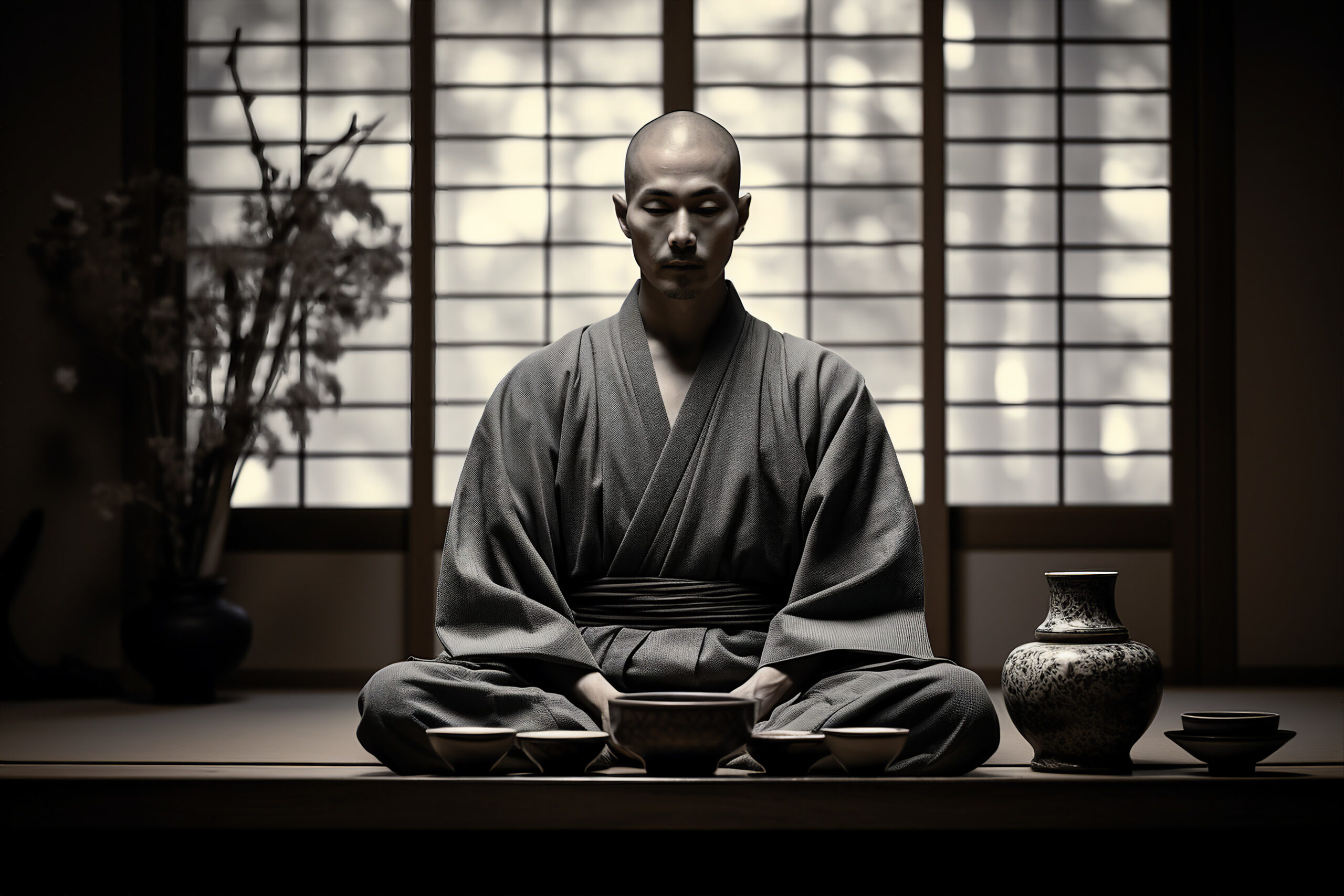In the fast-paced world we live in, finding tranquility and composure seems like a quest for the elusive. Amidst the relentless hustle and bustle, the ancient practice of Zazen offers a sanctuary for the mind, body, and soul. Zazen, or seated meditation, is more than just a method of relaxation; it is a profound journey towards self-discovery and inner peace. This practice, deeply rooted in Zen Buddhism, beckons individuals to embark on a transformative voyage of mindfulness and serenity. In this exploration of Zazen, we unravel the tapestry of its history, techniques, and far-reaching benefits, guiding you from the novice steps to the pinnacle of meditation mastery.
Unveiling Zazen: The Path to Inner Peace
Zazen, often translated as "seated meditation," is a cornerstone of Zen Buddhism, offering a pathway to profound tranquility and enlightenment. Unlike other forms of meditation that may focus on mantras or guided imagery, Zazen emphasizes sitting in silent observation, turning the mind inwards to confront the self as it is. This practice champions the art of "just sitting," where the act itself is the goal, not a means to an end. By fostering a deep connection with the present moment, practitioners can experience a sense of peace and clarity that transcends the tumult of daily life. Zazen is not merely an escape from the world but a deeper engagement with it, through the lens of serene mindfulness.
The Roots of Zazen: A Historical Overview
The practice of Zazen can be traced back to the teachings of Siddhartha Gautama, the Buddha, over 2,500 years ago. However, it was the introduction of Zen Buddhism to China in the 6th century, and subsequently to Japan in the 12th century, that truly shaped the Zazen practice as we know it today. Zen, emphasizing direct experience and personal enlightenment, found its expression in the simple yet profound act of seated meditation. Historical figures such as Bodhidharma and Dogen Zenji have been pivotal in defining and refining Zazen, emphasizing its role as the very essence of Zen practice. Through centuries, Zazen has been a vessel for transmitting the silent teachings of Zen, unadulterated by the constraints of language and scripture.
Setting the Scene: Preparing for Zazen Practice
Embarking on the Zazen journey requires minimalism with a focus on creating a conducive environment. The setting for Zazen is traditionally a quiet, clutter-free space that promotes a sense of calm and focus. A meditation cushion or bench is often used to elevate the hips, facilitating a stable and comfortable seated posture. The room’s temperature should be moderate – neither too hot nor too cold – to prevent discomfort that might distract from meditation. Some practitioners may choose to face a wall to minimize visual distractions, further enhancing the inward focus. Preparing the space thoughtfully can be seen as the first step in cultivating the mindfulness and intentionality at the heart of Zazen practice.
The Ideal Posture: Mastering the Art of Sitting
In Zazen, the posture is paramount, serving as the foundation for deeper meditation. The traditional position is the lotus or half-lotus pose, where the legs are crossed, and the feet rest on opposite thighs. This position, however, is not mandatory; what is crucial is maintaining a stable, upright posture that allows for natural breathing. The back should be straight, with the shoulders relaxed and the hands rested gently on the lap. The head is held as though suspended from above, with the chin slightly tucked in. The eyes remain open, softening the gaze to prevent drowsiness. Mastering this posture not only prevents physical strain but also cultivates the mental discipline necessary for sustained meditation.
Breathing in Zazen: The Lifeline of Meditation
Breathing, in the context of Zazen, is more than a physiological necessity; it is the lifeline of meditation. Practitioners are encouraged to breathe deeply and naturally, allowing the breath to flow freely without force or restraint. The focus is on the rhythm of inhalation and exhalation, which becomes a gentle anchor for the wandering mind. By centering attention on the breath, individuals can navigate the ebb and flow of thoughts with detachment and equanimity. This mindful breathing not only calms the nervous system but also facilitates a deeper state of meditation, where the boundaries between the breather and the breath begin to dissolve.
Mindfulness in Motion: The Zazen Approach
Zazen cultivates a state of mindfulness that extends beyond the cushion, infusing every aspect of daily life with awareness and presence. This approach to mindfulness is not passive but an active engagement with the present moment, regardless of the activity at hand. Whether eating, walking, or speaking, the Zazen practitioner brings the same quality of focused attention and intentionality as to meditation. This seamless integration of mindfulness into daily activities transforms mundane tasks into acts of meditation, blurring the lines between formal practice and the art of living. Through this lens, every moment becomes an opportunity for awakening and insight.
Zazen and Zen Buddhism: An Inseparable Bond
Zazen is intrinsically linked to Zen Buddhism, embodying its core tenets and philosophical underpinnings. Zen, with its emphasis on direct experience and the inherent Buddha nature within all beings, finds its most authentic expression in the practice of Zazen. This form of meditation is not only a method for achieving personal enlightenment but also a manifestation of the Zen worldview, where enlightenment is not separate from the act of living. Zazen and Zen Buddhism are thus inseparable, each reflecting and reinforcing the other in a symbiotic relationship that transcends the boundaries of conventional religious practice.
The Challenges of Zazen for Beginners
For newcomers, Zazen can present a myriad of challenges, both physical and mental. The physical discomfort of sitting still for extended periods can be daunting, often leading to restlessness and frustration. Mentally, the task of quieting the mind and observing thoughts without attachment is equally challenging, confronting individuals with the relentless pace of their inner dialogue. These initial hurdles, however, are integral to the practice, offering valuable lessons in patience, perseverance, and acceptance. Overcoming these challenges is part of the transformative journey of Zazen, leading to deeper insights and a heightened sense of inner peace.
Overcoming Mental Barriers in Zazen Practice
The mental barriers encountered in Zazen, such as scattered thoughts, boredom, and self-doubt, are common to all practitioners at various stages of their journey. Overcoming these barriers requires a gentle, non-judgmental approach to the self, where each obstacle is met with compassion and patience. The practice of returning to the breath serves as a powerful tool for navigating mental tumult, anchoring the mind in the present. Additionally, understanding that these barriers are not impediments but integral aspects of the practice can transform the way they are perceived, turning them into opportunities for growth and self-discovery.
Zazen in Daily Life: Integrating Mindfulness
Integrating the principles of Zazen into daily life is a gradual process that unfolds uniquely for each individual. The mindful awareness cultivated on the cushion begins to seep into everyday activities, from the way one eats and communicates to the manner in which one deals with stress and conflict. This integration transforms the quality of day-to-day living, imbuing ordinary moments with a sense of grace and mindfulness. By bringing the essence of Zazen into the world, practitioners become beacons of calm and presence, positively influencing their environment and relationships.
The Scientific Angle: Benefits of Zazen Explained
The benefits of Zazen, long espoused by practitioners, have been increasingly validated by scientific research. Studies have demonstrated that regular meditation can significantly reduce stress, anxiety, and depression while enhancing concentration, memory, and emotional well-being. The physiological benefits include lower blood pressure, improved immune function, and greater neuroplasticity. These findings offer a compelling case for the practice of Zazen, bridging the gap between ancient wisdom and modern science, and highlighting its relevance in addressing the challenges of contemporary life.
From Novice to Master: The Journey of Zazen Mastery
The journey from a novice to a master in Zazen is a lifelong path of continuous learning and deepening. Mastery is not about achieving a particular state of enlightenment but about embracing each moment with mindfulness and open-heartedness. The true master of Zazen is one who recognizes that the practice is never complete, that each sitting is an opportunity to awaken anew. This humble approach, coupled with the discipline and dedication to practice, paves the way for a profound transformation that transcends the boundaries of the meditation cushion, influencing every aspect of one’s life and interactions.
Exploring Zazen is akin to embarking on an expedition into the depths of one’s being, where the treasures of peace, clarity, and enlightenment await discovery. This ancient practice, rooted in the rich soil of Zen Buddhism, offers a timeless solution to the modern malaise of disconnection and distraction. By mastering the art of seated meditation, individuals can unlock the door to inner tranquility, integrating mindfulness into the fabric of daily life. As science begins to uncover the tangible benefits of Zazen, its significance extends beyond spiritual fulfillment, promising a holistic approach to well-being in our increasingly frenetic world. Whether you stand at the threshold of this journey as a curious novice or tread the path towards mastery, Zazen beckons with the promise of transformation, one breath, one moment, at a time.








